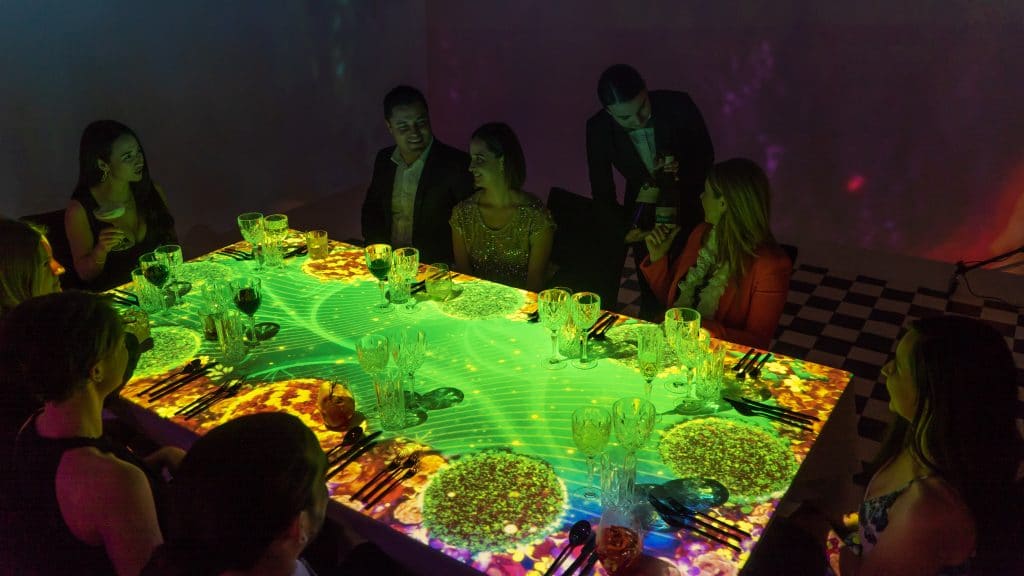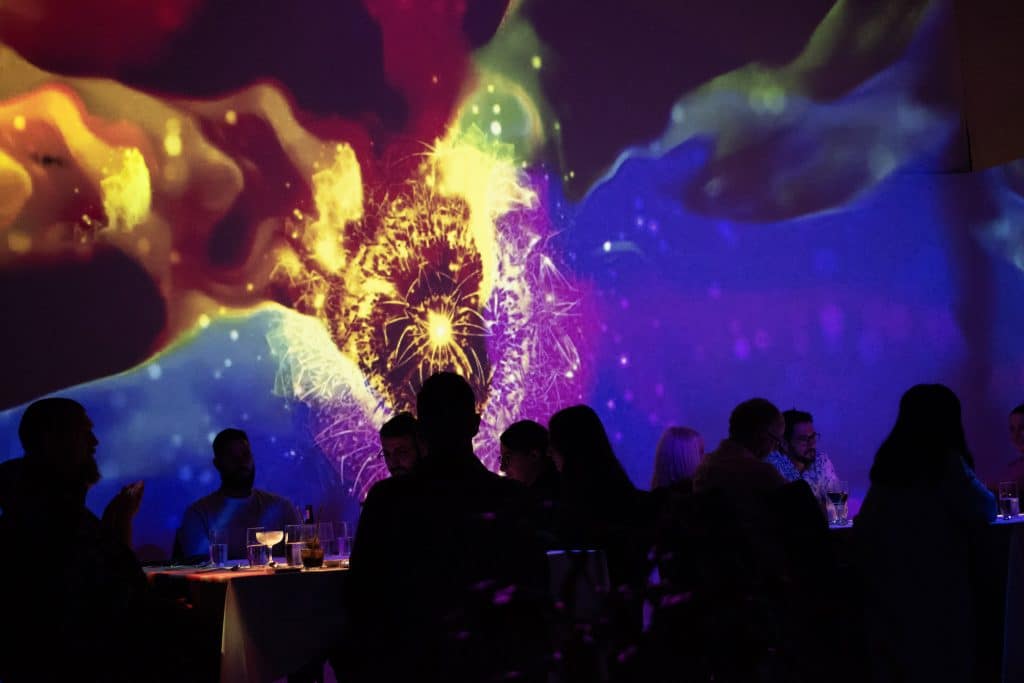Immersive Dining Experience: The Future Of Culinary Adventures
Immersive dining experience has become the buzzword in the world of gastronomy. Gone are the days when dining out was simply about enjoying a meal. Today, it’s all about creating an unforgettable journey that engages all your senses. From interactive environments to storytelling through food, this culinary trend is transforming the way we perceive dining.
Restaurants around the globe are now incorporating technology, art, and culture into their menus to offer patrons more than just a plate of food. This shift in the dining landscape reflects a growing demand for experiences that are unique, memorable, and shareable. Whether it’s a multi-sensory feast or a themed dinner that transports you to another era, immersive dining is redefining the concept of fine dining.
In this article, we will explore the world of immersive dining experiences, uncovering the key elements that make these events so captivating. We’ll also delve into the role of technology, design, and creativity in crafting these unforgettable culinary adventures. Let’s dive in!
Read also:Brian Patrick Carroll The Untold Story Of A Remarkable Journey
Table of Contents
- What is Immersive Dining Experience?
- The History of Immersive Dining
- Key Elements of an Immersive Dining Experience
- Role of Technology in Immersive Dining
- Popular Themes in Immersive Dining
- Health and Safety Considerations
- Economic Impact of Immersive Dining
- Global Trends in Immersive Dining
- The Future of Immersive Dining Experience
- Conclusion
What is Immersive Dining Experience?
An immersive dining experience goes beyond traditional dining by integrating sensory elements that create a deeper connection between the diner and the meal. It’s not just about the taste; it’s about the ambiance, the story behind the food, and the overall environment. The goal is to make every aspect of the dining process engaging, from the moment you walk in to the moment you leave.
Restaurants achieve this by combining visual, auditory, and even olfactory elements to enhance the dining experience. For instance, some restaurants use projections and soundscapes to simulate being in a forest or on a beach while enjoying your meal. Others incorporate live performances or interactive installations that encourage diners to participate actively in the experience.
Why Immersive Dining is Gaining Popularity
- Offers a unique and memorable experience
- Appeals to the growing trend of experiential consumption
- Encourages social sharing and interaction
The History of Immersive Dining
The concept of immersive dining is not entirely new. Throughout history, people have sought ways to make meals more engaging and entertaining. From ancient Roman feasts to medieval banquets, dining has always been an occasion for celebration and storytelling. However, the modern version of immersive dining began to take shape in the late 20th century with the rise of themed restaurants and interactive dining experiences.
Today, the industry has evolved to include cutting-edge technology, such as augmented reality (AR) and virtual reality (VR), to enhance the dining experience. This blend of tradition and innovation has resulted in a vibrant and dynamic culinary landscape that continues to captivate diners worldwide.
Evolution of Immersive Dining
The evolution of immersive dining can be traced through several key milestones:
- 1970s: Emergence of themed restaurants
- 1990s: Introduction of interactive dining experiences
- 2010s: Integration of technology in dining
Key Elements of an Immersive Dining Experience
Creating a successful immersive dining experience requires careful consideration of several key elements. These elements work together to create a cohesive and engaging atmosphere that enhances the overall dining experience.
Read also:Ayako Kuroda Rising Star Of Japanese Cinema And Beyond
1. Atmosphere
The ambiance of the dining space plays a crucial role in setting the tone for the experience. Lighting, music, and decor all contribute to creating an environment that complements the theme of the meal.
2. Storytelling
Every great immersive dining experience tells a story. Whether it’s the story of the ingredients, the chef’s journey, or the cultural significance of the dish, storytelling adds depth and meaning to the meal.
3. Interaction
Encouraging interaction between diners and the environment is essential for creating an immersive experience. This can be achieved through interactive installations, live performances, or even allowing diners to participate in the cooking process.
Role of Technology in Immersive Dining
Technology has revolutionized the way we experience food. From 3D printing to AI-powered menus, the possibilities are endless. One of the most exciting applications of technology in immersive dining is the use of augmented reality (AR) and virtual reality (VR).
AR allows diners to interact with digital elements overlaid on the real world, while VR can transport them to entirely new environments. These technologies enhance the dining experience by adding an extra layer of engagement and entertainment.
Examples of Technology in Action
- Interactive table projections
- AR menus that display 3D models of dishes
- VR headsets that simulate different dining environments
Popular Themes in Immersive Dining
The themes of immersive dining experiences vary widely, offering something for every type of diner. Some popular themes include:
1. Cultural Immersion
These experiences transport diners to different parts of the world, allowing them to explore the culinary traditions of various cultures. For example, a Japanese tea ceremony or an Indian spice market dinner.
2. Historical Reenactments
Historical themes recreate famous meals from different eras, such as a medieval banquet or a Victorian dinner party. These experiences often include period-appropriate attire and decor.
3. Nature-Inspired Dining
These experiences use natural elements to create a serene and peaceful atmosphere. Think dining under a starlit sky or in a lush forest setting.
Health and Safety Considerations
While immersive dining experiences are designed to be fun and engaging, it’s important to consider health and safety. With the rise of global health concerns, restaurants must ensure that their experiences are safe for all diners.
Some key considerations include:
- Sanitization of equipment and surfaces
- Proper food handling and storage
- Clear communication of dietary restrictions and allergies
Economic Impact of Immersive Dining
The immersive dining industry has a significant economic impact, contributing to job creation and tourism. Restaurants that offer immersive dining experiences often attract a diverse range of customers, from locals to international tourists. This increased foot traffic can boost the local economy by supporting related businesses such as hotels, transportation, and entertainment venues.
Moreover, the unique nature of these experiences makes them highly shareable on social media, providing free advertising for restaurants and increasing their visibility.
Global Trends in Immersive Dining
Immersive dining is a global phenomenon, with different regions putting their own spin on the trend. In Asia, for example, technology-driven dining experiences are becoming increasingly popular, while in Europe, cultural and historical themes dominate.
Some global trends to watch include:
- Increased use of sustainable and locally-sourced ingredients
- Integration of wellness and mindfulness into dining experiences
- Collaborations between chefs and artists to create multi-disciplinary events
The Future of Immersive Dining Experience
The future of immersive dining is bright, with advancements in technology and changing consumer preferences driving innovation. As more people seek experiences that are both unique and meaningful, the demand for immersive dining experiences is likely to grow.
Looking ahead, we can expect to see even more sophisticated use of technology, greater emphasis on sustainability, and increased collaboration between chefs, artists, and technologists to create truly unforgettable dining experiences.
Conclusion
In conclusion, the world of immersive dining experience is a fascinating blend of art, technology, and culture. By combining sensory elements with storytelling and interaction, these experiences offer diners a chance to explore new worlds and create lasting memories. As the industry continues to evolve, we can look forward to even more exciting developments that will further redefine the concept of dining.
So, the next time you’re planning a night out, consider stepping out of your comfort zone and trying an immersive dining experience. Who knows, it might just become your new favorite way to enjoy a meal!
We invite you to share your thoughts and experiences in the comments below. Have you tried an immersive dining experience? What did you think? And don’t forget to explore our other articles for more insights into the world of food and dining.


